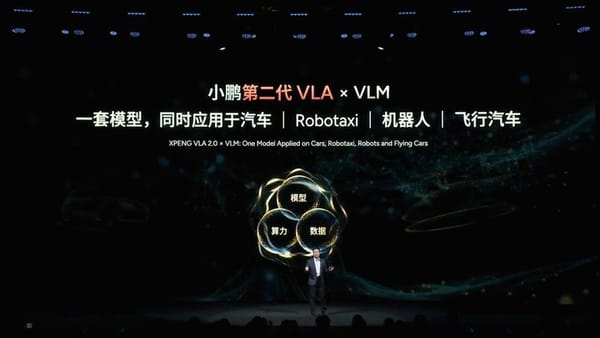# Word-of-Mouth Marketing in the Digital Age
**Insights from _Consumer Behavior: Buying, Having, and Being (14th Edition)_**
By Michael R. Solomon & Krystle Antonia Russell
**Source:** China Renmin University Press
**No. 9251** — **Word count:** 5973 | **Estimated reading time:** 11 minutes
---
## Introduction
In today’s marketing landscape, **influencer-driven sales** are no longer novel. Platforms like Rednote (Xiaohongshu) enable micro-influencers to drive conversions that sometimes surpass celebrity endorsements.
This trend — one voice inspiring countless followers — is the **digital-age evolution of word-of-mouth marketing**. Solomon’s case studies explore the psychology and social network dynamics behind viral successes such as:
- KFC’s “Crazy Thursday” meme marketing
- Fat Donglai mooncake craze
- Labubu collectible toy phenomenon
---
## 1. Navigating the “Echo Universe”
### What is Hype?
“Hype” is the self-sustaining consumer attention loop. It acts like a free nationwide ad campaign but can also spiral into a negative storm.
---
### 1.1 Positive Hype: Taking Niche Mainstream
Example: **Picoo Z Mini Helicopter**
- Little-known before a single YouTube review sparked friends to buy and post their own content
- Within months:
- Hundreds of related videos
- 1M+ views
- Google searches over 109k
**Key Concept:** The **“Echo Universe”** — a closed-loop feedback where messages bounce between official communications, media coverage, and user-generated content, turning passive consumers into active broadcasters.
---
### 1.2 Negative Hype: When Buzz Turns Toxic
Consumers weigh **negative reviews** more heavily than positive, especially for new products.
**Example:** Abercrombie & Fitch’s CEO comment about wanting only “cool” kids wearing the brand
- Social media backlash escalated rapidly
- Reputation collapsed
**Distortion Effect**
Information changes as it travels:
- **Leveling:** Simplifying and omitting details
- **Sharpening:** Exaggerating or emphasizing certain points
In the digital era, distortion multiplies negative impact. E.g., “some dishes are pre-made” becomes “all dishes are pre-made.”
---
## 2. Social Networks: The Main Arena
Social networks — online and offline — are core channels for word-of-mouth.
---
### 2.1 Fundamentals
**Components:**
- **Nodes:** Members of the network
- **Connections:** Links between nodes (shared hobbies, family ties, etc.)
- **Information Flow:** Exchange of resources, info, or influence
Example: University alumni network where job postings, reunions, and collaborations create an **active information flow**.
---
### 2.2 Information Cascade
An **information cascade** occurs when herd behavior drives decisions — people act based on others rather than personal judgment.
**Impact:**
- Can fuel viral growth
- Or spread irrational trends that harm brands if product quality is poor
---
## 3. Opinion Leaders & Influencers
### 3.1 Opinion Leaders
Trusted individuals with deep product knowledge who sway communities.
Example: Vaseline finding a local opinion leader in Kodiak, Alaska to promote lotion — her endorsement proved more effective than ads.
**Identifying True Leaders:**
- Track behavior and posting frequency
- Assess how often they’re quoted or referenced
---
### 3.2 Influencer Categories
**Mega Influencers:** 1M+ followers — massive reach, low engagement specificity, high cost
**Macro Influencers:** 100k–1M — niche expertise with solid reach
**Micro Influencers:** 10k–100k — high engagement, audience trust
**Nano Influencers:** <10k — highly authentic, targeted reach
**Pitfalls:** Fake followers and content-audience mismatch
---
### 3.3 Proxy Consumers
Influencers act as **proxy consumers** — testing products for followers, reducing decision costs.
Conditions for effectiveness:
1. **Expertise**
2. **Altruism**
Trust fragility: Misuse (e.g., false advertising) can harm both influencer and brand.
---
## 4. Practical Insights for Brands
### 4.1 Create Shareable Content
Make products that fulfill social needs, e.g., Luckin’s “Sauce Latte” offers the social prestige of tasting Moutai affordably.
---
### 4.2 Build Multi-Platform Information Flow
Tailor content to platform characteristics:
- **Xiaohongshu:** Authentic reviews, detailed usage
- **Douyin:** Fun, quick, practical — hook in 3 seconds
- **WeChat:** In-depth storytelling, blend private/public domain
---
### 4.3 Layered Influencer Strategy
Different tiers serve different purposes:
- **Mega:** Awareness
- **Macro:** Deepening brand perception
- **Micro/Nano:** Driving local trust and conversions
---
### 4.4 Negative Word-of-Mouth Response Mechanism
**Timeliness:** Respond within 4 hours
**Sincerity:** Accept responsibility
**Solution-Oriented:** Provide practical fixes and updates
---
## Conclusion
**Word-of-mouth spreads people — trust, recognition, and shared experience — as much as products.**
Brands should focus on:
- Activating consumers as sharers
- Understanding network dynamics
- Vetting influencers carefully
- Designing for shareability
- Responding to crises swiftly
---
> **Tip:** Tools like [AiToEarn](https://aitoearn.ai/) provide open-source AI-powered content creation and synchronized multi-platform publishing — ideal for managing influencer collaborations, monitoring buzz, and reacting in real-time.

[Read the original article](2654898903)
[Open in WeChat](https://wechat2rss.bestblogs.dev/link-proxy/?k=51f8acf0&r=1&u=https%3A%2F%2Fmp.weixin.qq.com%2Fs%3F__biz%3DMzIxNTAzNzU0Ng%3D%3D%26mid%3D2654898903%26idx%3D2%26sn%3Da67ece5674f205ebd7d6a1899bad2232)





